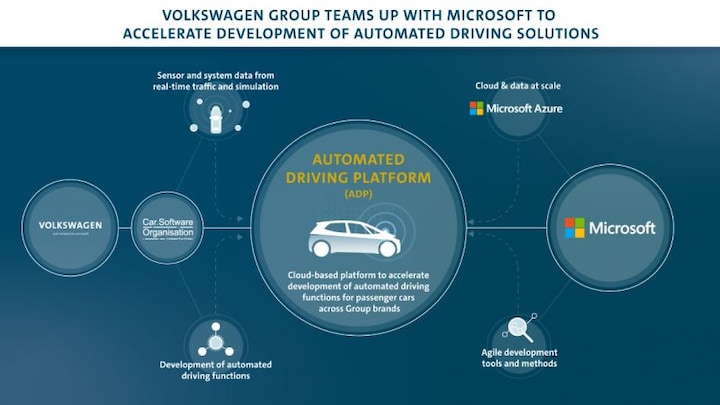The Volkswagen Group and Microsoft will work together on a digital platform that should speed up the development of autonomous cars.
Less than a month ago it was announced that General Motors and software giant Microsoft are going to work together to develop autonomous cars. Now the Volkswagen Group is announcing a similar partnership. The group is setting up a platform with Microsoft for the development of technology for self-driving cars. Wolfsburg calls this the ‘Automated Driving Platform’. Volkswagens software division, Car.Software, plays the leading role in this.

Car.Software uses Microsoft Azure, a cloud computing platform on which enormous amounts of data can come together in a streamlined manner. “By combining our expertise in connected driving development with Microsoft’s cloud and software expertise, we can accelerate the development of safe mobility services,” said Dirk Hilgenberg, CEO of Car.Software. For example, enormous mountains of data are received during tests of sensors for autonomous driving cars, and that can be better structured and addressed faster via the cloud by means of Azure. Artificial intelligence based on this data can also improve faster by means of ‘machine learning’. That’s the idea, anyway.
Volkswagen also states that the initiative should lead to a large-scale test with a fleet of smart test cars this year. The first series of ‘connected’ production cars should be launched on the market in 2022. Think of cars that can take over more and more tasks from drivers thanks to sensors and data exchange. Under the name ‘Artemis’, Volkswagen’s R&D leader Audi is working on a ‘halo car’, a new flagship with the latest developments in electric and autonomous driving on board. This may be the car VW is referring to in this case. Logically, it is a fully electric alternative to the Audi A8. A car that directly competes with the showpiece of Mercedes-Benz in this field, the EQS. The Aicon Concept from 2017 (photos) was a precursor of this.